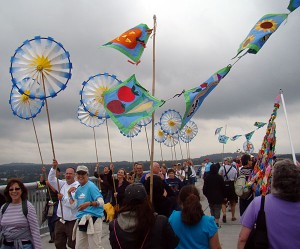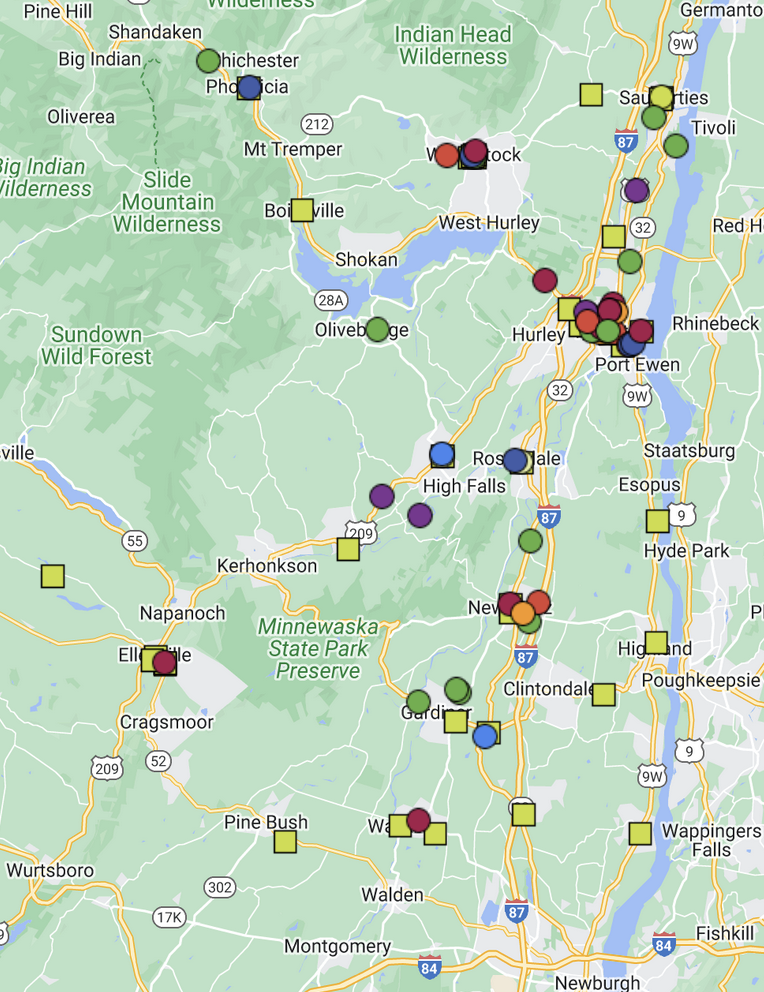
On Saturday, October 3, 2009 the Walkway Over the Hudson State Historic Park opened to the public to enjoy the scenic beauty of the Hudson River Valley.
On Saturday, October 3, 2009 the Walkway Over the Hudson State Historic Park opened to the public to enjoy the scenic beauty of the Hudson River Valley.
Park hours: 7:00 a.m. to sunset
Access is from Parker Avenue in Poughkeepsie
and Haviland Road in Highland.
The bridge is handicapped accessible and dogs are allowed
New York Times
Editorial
October 5, 2009
The View From 1889
The Poughkeepsie-Highland Railroad Bridge, built in the late 19th century to link New York and New England to the coal beds of Pennsylvania and the West, is a marvel of Industrial Revolution engineering. It fills the sky over the Hudson River, a muscular lattice of trusses and struts on giant footings, a survivor from a long-gone era before bridge mediocrities like the Tappan Zee.
Anyone who has ever gazed on it from the riverbank and wondered what it was like to walk across will now be able to find out. It has just been opened to the public as Walkway Over the Hudson, the latest example of the new kinds of infrastructure- for tourism and recreation- that are reshaping the Hudson Valley.
The bridge was abandoned in the 1970s and sat for decades because it was too expensive to tear down. Volunteers made fitful efforts to repair it as a walkway, but the project took off only about five years ago with big infusions of ambition and money, including federal and state aid and a $2 million corporate grant. This year’s 400th anniversary of Henry Hudson’s river trip helped push the $38 million project to completion.
The bridge is part of a bigger web of things to see and do up and down the Hudson River. There are trails and bike paths from both sides linking the nearby Mid-Hudson Bridge, downtown Poughkeepsie, and parks, historic homes and landmarks. To the many civic, environmental and historic organizations that look after the Hudson Valley- including Scenic Hudson, whose land acquisitions have given the region a wealth of public greenery- the bridge has two jobs: be lovely to look at (and from), and energize the economy.
The Henry Hudson anniversary sparked many plans for legacy projects, many of them- including land purchases as a bulwark against view-destroying sprawl- still unrealized. Maybe as the economic and aesthetic benefits of this once-dreamy, impractical vision- saving and fixing a big old bridge- become clearer, people will summon the will and means to dream even bigger.
This editorial appeared in print on October 6, 2009, on page A30 of the New York edition.
